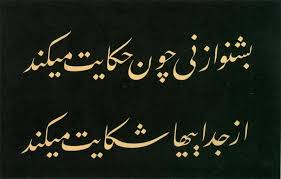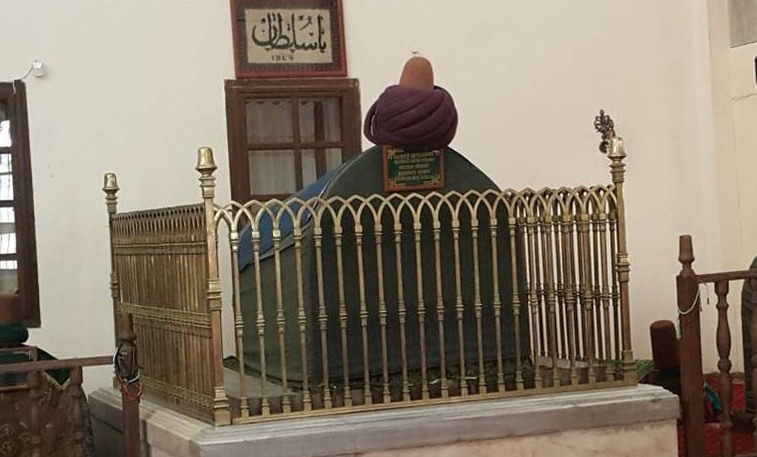ŞEYH GALİP’İN CEZÎRE-İ MESNEVÎ ŞERHİ ÜZERİNE KARŞILAŞTIRMALI BİR İNCELEME
ŞEYH GALİP’İN CEZÎRE-İ MESNEVÎ ŞERHİ ÜZERİNE KARŞILAŞTIRMALI BİR İNCELEME*
A COMPARATIVE ANALYSIS OF SHEIKH GHALIB’S ANNOTATION OF CEZÎRE-I MESNEVÎ
Seda UYSAL BOZASLAN1
ÖZ
Şerh geleneği, İslam geleneğinde hem fıkıh, kelam, hadis, tefsir gibi dinî metinler hem de mantık, felsefe, tıp, aruz, belagat, gibi ilmî konulu metinlerle ilgili mensur ve manzum metinlerin şerhleriyle ivme kazanmıştır. Türk edebiyatında edebî ve dinî nitelikli Arapça ve Farsça eserlerin şerh edildikleri bilinmektedir. Bu tip eserlerden biri Mevlana Celaleddin Rumî’nin Mesnevi-i Manevi’sidir. Mesnevi tercüme ve şerhlerinde özellikle 16. ve 17. yüzyıllarda bir artış gerçekleşmiştir. Mesnevi üzerine yapılan bu çalışmalar arasında ilgili beyitlerin bir araya getirilmesiyle oluşturulan seçkilerin şerhleri olan intihab şerhleri önemli bir yere sahiptir. Yûsuf-ı Sîne-çâk’in eseri Cezîre-i Mesnevî, söz konusu seçkilerin en önemlilerindendir. Çeşitli yüzyıllarda farklı şarihler tarafından şerh edilen bu eserin son şerhi Şeyh Galip tarafından kaleme alınmıştır. Şeyh Galip’in eseriyle ilgili tespit edilebilen yazmalar M. 1791-92 tarihini göstermektedir. Karşılaştırma yönteminin esas alındığı bu çalışmada 18. yüzyılın öne çıkan şair ve şarihlerinden Şeyh Galip’in Şerh-i Cezîre-i Mesnevî’sini diğer Cezîre şerhlerinden ayıran nitelikleri üzerinde durulmuş ve ondan sonra başka bir şerh yazılmamasının nedenleri tartışmaya açılmıştır. Çalışmanın sonucunda Galip’in Şerh-i Cezîre-i Mesnevî’sini diğer şerhlerden farklı kılan özelliklerin onun dönemini aşan yöntemi ve eserini besleyen kaynakların çeşitliliğiyle ilgili olduğu tespit edilmiştir.
Anahtar Kelimeler: Şerh-i Cezîre-i Mesnevî, Şeyh Galip, Şerh, 18. yüzyıl, Şerh yöntemi
ABSTRACT
The tradition of annotation gained a foothold in the Islamic tradition due to the annotation of religious works of tafsir, hadith, fıqh, and kalam, and of scientific works in the fields of logic, prosody, philosophy, rhetoric, and medicine. In Turkish literature, Arabic and Persian works – both literary and religious – were annotated too. One such work is Mawlana Jalâl al-Dîn Muhammad Rûmî’s Mathnawi-i Manawi. It was particularly in the 16th and 17th centuries that translations and annotations of Mathnawi increased in number. Among several works on Mathnawi, anthologies written by compiling couplets from Mathnawi based on the interrelatedness of their meaning hold a significant place. Yûsuf-ı Sîne-çâk’s Jazeera-i Mathnawi is one of the most important of these anthologies. The last annotations of this work, on which annotations were written over the centuries, was penned by Sheikh Ghalib, who was numbered among the most outstanding poets and annotators of the 18th century. The earliest manuscripts of Sheikh Ghalib’s work date back to 1791-2 C.E. This study, in which the comparative method is employed, explores which aspects of Ghalib’s Sharh-i Jazeera-i Mathnawi distinguish it from other annotations of Jazeera-i Mathnawi and why no other annotation was written after it. The study’s findings suggest that the main aspects that answer these questions are Ghalib’s methodology that was unprecedented for his time and the diversity of sources that inform his writing.
Keywords: Sharh-i Jazeera-i Mathnawi, Sheikh Ghalib, Annotation, 18th century, Methodology of annotations
Extended Abstract
The verb ‘şerh etmek’, which is the Turkish equivalent for the verb ‘to annotate’, is defined in dictionaries as ‘to cut, to slice, to split-open, to explain, and to elucidate’. However, the ‘to explain’ and ‘to elucidate’ meanings of the verb have widened to cover the meanings of ‘to clarify, to explain a complicated matter, to reveal the hidden and the covert’. It is stated that the tradition of annotation began with Aristotle in the West and gained pace in the Islamic tradition due to the annotation of not only religious works regarding tafsir, hadith, fıqh, and kalam, but also of scientific works in the fields of logic, prosody, philosophy, rhetoric, and medicine. In Turkish literature, it is seen that Arabic and Persian works of both literary and religious qualities were annotated as well. One such work is Rumî’s Mathnawi-i Manevî, which is counted among the most significant works. The 16th and 17th centuries saw an increase in the numbers of translations of and annotations for Mathnawi-i Manevî. Güleç classifies these annotations as partial annotations, selective annotations, preamble annotations, annotations for a number of couplets, annotations for the first 18 couplets, and annotations for selected couplets (2008, p.136-245).
According to the sources, selective annotations, and anthologies for Mathnawi that were comprised by grouping related couplets held a significant place in terms of quantity and quality, and the 16th-century poet Yûsuf-ı Sîne-çâk’s anthology of couplets Jazeera-i Mathnawi is among the most noteworthy of these works. Jazeera-i Mathnawi, meaning ‘the isle of Mathnawi, comprises of 366 couplets that were compiled by Yûsuf-ı Sîne-çâk from the six volumes of Mathnawi based on the interrelatedness of their meaning. Jazeera-i Mathnawi was novel in that it was organised by grouping couplets according to their interrelatedness in terms of meaning, and it had the quality of a compilation as a collection of couplets. It is suggested that the work was written for the purpose of informing newly initiated dervishes on the core doctrines of the Mawlawi order. Yûsuf-ı Sîne-çâk’s work was highly revered in all eras, it was read in Mawlawi lodges for centuries, and it was annotated in Turkish by several annotators. The last of these selective annotations was written by Sheikh Ghalib. The full title of Ghalib’s work is Semahâtu Lemaâtı Bahrü’l-Manevî bi-Şerhi Cezîreti’l-Mesnevî. The earliest manuscript of this work dates back to 1791-2 C.E. In his work, Ghalib included an additional couplet which was traditionally read along with Mathnawi, thus raising the number of annotated couplets to 367. While setting out his work, Ghalib stated that he would provide two different commentaries for each couplet – one from the perspective of Mathnawi, another from the perspective of Cezîre – despite the fact that the couplets were identical in both works; he also declared that he would address not only those newly initiated to the Mawlavi order, but also bear in mind others who had reached a further point in their spiritual journey. Ghalib begins his work with a verse from the Qur’an expressing gratefulness and thanks to Allah and praising and saluting the Prophet Mohammed. Briefly mentioning himself and how he was initiated into the Mawlawi order, he touches upon Yûsuf-ı Sîne-çâk’s Jazeera-i Mathnawi. He states that he undertook this task of annotating 366 couplets from Mathnawi selected on the basis of their interrelatedness under the guidance of Sheikh Ali Dede. Suggesting that each couplet that exists identically in Mathnawi and Jazeera-i Mathnawi could be interpreted differently from the two perspectives, he announces his intention to include in his work both of these different interpretations.
This study explores the aspects that distinguish Ghalib’s annotation for Jazeera-i Mathnawi from other annotations and that make it the last one written for Yûsuf-ı Sîne-çâk’s work. The present study shows that Ghalib’s Sharh-i Jazeera-i Mathnawi differs from other annotations in that Ghalib’s introduction to his work sets out a methodology by mentioning that two different sets of commentaries would be included. Other annotators, on the other hand, resort to conventional statements along with certain official information. Galib’s introduction resembles the modern annotations of our age in that it deals with the work that is to be annotated and its author, and it explains why the annotation is written, to what purpose it will serve, which audience it addresses, and what methodology is adopted. Framing such an introduction which is close to the modern-day introductions, Ghalib seems to be much better-informed in terms of theory, compared to other annotators. Ghalib’s inclusion of different interpretations and his independent style indicate that his annotation was based on the accumulative knowledge of all other annotations and completed with his own knowledge.
Another distinctive aspect of Galip’s work is the diversity and the wide range of sources that are referred to. In addition to two different interpretations of the couplets that follow the explanations of words’ denotative and connotative meanings and the translation of the couplets, Ghalib enriched his work by referring to verses from the Qur’an, hadith, sayings and opinions of important personalities, and to other couplets quoted from Mathnawi as well as poetry by poets he admired. His unprecedented methodology, his versatile style that compiles different interpretations and offers his own interpretation on top of them, and the diversity of sources he refers to stand out as the distinctive aspects that distinguish Ghalib’s annotation from others and make it the last annotation written for Sharh-i Jazeera-i Mathnawi.
1. Şerh Geleneği ve Cezîre-i Mesnevî’nin Türkçe Şerhleri
Sözlükte “bir şeyi kesmek, dilmek, kesip yarmak, açmak, net görülebilecek hâle koymak, açıklamak, izah etmek” (Mutçalı, 2012, s. 477) anlamıyla yer alan şerhin “açıklamak ve izah etmek” anlamları, sonraları “bir durumu açıklığa kavuşturmak, müşkil bir meseleyi açıklamak, kapalı ve gizli şeyleri ortaya çıkarmak” (Saraç, 2007, s. 121) biçiminde genişlemiştir. Şerh çalışmalarının Batı’da Aristoteles zamanında ortaya çıktığı ifade edilmektedir (Yazar, 2011, s. 19-20). Tefsir araştırmalarıyla birlikte İslami gelenekte de yer alan şerhlerin, Kur’an başta olmak üzere öncelikle dinî metinleri anlamlandırmak için yapıldığı anlaşılmaktadır. Bunun yanında şerhler; mantık, tıp, aruz, belagat, felsefe gibi ilimlerle ilgili mensur ve manzum metinlerle de hız kazanarak daha fazla çalışma alanına yayılmıştır (Saraç, 2007, s. 122). Bunların yanı sıra edebî ve dinî niteliği olan Arapça ve Farsça eserlerin de Türk edebiyatında şerh edildiği görülmektedir. Ünü farklı ülkelere yayılmış, dinî-tasavvufi ve ahlakî öğretileriyle evrensel bir dile ulaşmış ve farklı dillere çevirisi yapılmış Mevlana Celaleddin Rumî’nin Mesnevi-i Manevi’si bu tür eserlerin en önemlilerinden biridir. Eserin gördüğü ilgi ve konu edildiği şerh ve tercümeler bakımından müstesna bir yere sahip olduğu ve Osmanlılarda böyle başka bir eserin yer almadığı kaynaklarda özellikle belirtilmektedir (Horata, 2007, s. 566). Güleç, Mesnevi-i Manevi’nin tercüme ve şerhlerinde özellikle XVI ve XVII. yüzyılda artış görüldüğünü, Mesnevi’nin tamamına yapılan şerhlerin dışında farklı biçimlerde tercüme ve şerhlerin de kaleme alındığını ifade etmektedir (2008, s. 138). Aynı çalışmada Mesnevi’nin tamamına yapılan şerhlerin dışındakiler üzerinde de durulmuştur. Bunlar; kısmen yapılan şerhler (Mesnevi’nin bir kısmına yapılanlar), seçme beyitlere (intihab) yapılan şerhler, dibace (ön söz) şerhleri, Mesnevi’nin birkaç beytine yapılan şerhler, Mevlana’nın bizzat kaleme aldığı ilk on sekiz beytin şerhleri, seçme beyitlere beş beyit ilavesiyle yapılan şerhler olarak sınıflandırılmıştır (2008, s. 136-245).
Mesnevi şerhleri arasında ilgili beyitlerin bir araya getirilmesiyle oluşturulan seçkilerin şerhleri olan intihab şerhlerinin nicelik ve nitelik bakımından önemli bir yeri olduğu söylenmektedir. XVI. yüzyıl şairlerinden Yûsuf-ı Sîne-çâk’in Cezîre-i Mesnevî’si bu seçkiler arasında dikkate değer bir konuma sahiptir (Güleç, 2008, s. 165). Yûsuf-ı Sîne-çâk1, Vardar Yenicesi’nde doğmuş, ilmî eğitimini alırken İbrahim Gülşenî sohbetlerine dâhil olmuş ve Mısır’da bir süre onun hizmetinde bulunmuştur. Konya’ya giderek Mevleviliğe intisap eden şair, orada hizmetini tamamladıktan sonra pek çok seyahatte bulunmuştur. Edirne’de şeyhlik yapmış, bu sırada ortadan kaldırdığı bazı vakıflar nedeniyle düşmanlıklara maruz kalmış ve hayatının vefat edene (H. 941-M. 1546/1547) kadarki kısmını İstanbul’da geçirmiştir. Sîne- çâk’in Cezîre-i Mesnevî yanında Müntehabât-ı Rebâb-nâme’si, Nazîre-i Muhammediye’si ve bunların dışında on üç manzumesi bulunmaktadır (Gölpınarlı, 2006, s. 125). Bunlar arasında en çok bilinen, tercüme ve şerhlere konu olan eseri Cezîre-i Mesnevî’sidir. “Mesnevi adası” anlamına gelen bu eser, Sîne-çâk’in Mesnevi-i Manevi’nin altı cildinden anlam ilişkisi kurarak seçip bir araya getirdiği 366 beyitten oluşmaktadır. Eser beyit seçkisi olmasıyla derleme olmasına rağmen mana bakımından birbiriyle ilgili beyitlerin seçilmesi ve bir araya getirilmesiyle yeni bir eser özelliği göstermektedir. Eserdeki başlıklardan hareketle eserin Mevlevilik rehberi olduğu anlaşılmaktadır. Sîne-çâk’in tarikata yeni giren bir kişinin karşılaştığı durumlarda ne yapacağını bilmesi ve öğrenmesi amacıyla yazdığı anlaşılmaktadır (Güleç, 2008, s. 189).
Cezîre-i Mesnevî, Mevleviler arasında her çağda beğenilmiş ve saygı görmüş, yüzyıllardan beri Mevlevilerce okunmuş ve altı Türkçe şerhi Türk edebiyatında yer bulmuştur.2 Bu şerhlerin çalışmaya dâhil edilenleri şunlardır: Lemaât-ı Bahri’l-Ma’nevî Şerh-i Cezîre-i Mesnevî (İlmî Dede), Şerh-i Cezîre-i Mesnevî (Abdülmecid Sivasî), Şerh-i Manzûm-ı Cezîre-i Mesnevî (Abdullah Bosnavî), Hall-i Tahkîkât ve Aynü’l-Füyûz (Cevrî İbrahim Çelebi), Semahâtu Lemaâtı Bahrü’l-Manevî bi-Şerhi Cezîreti’l-Mesnevî (Şeyh Galip) (Uysal Bozaslan, 2016, s. 5).
İlk Türkçe Cezîre şerhi, İlmî Dede’nin Lemaât-ı Bahri’l-Ma’nevî Şerh-i Cezîre-i Mesnevî’sidir. Eser, H. 979/ M. 1571 yılında yazılmış mensur bir şerhtir. Eserin kaleme alınma sebebi dervişlerden birinin Farsça bilmeyenlerin de Cezîre’yi anlamasını istemesidir. Bu isteğin İlmî Dede’ye iletilmesi üzerine Mesnevi’den seçilen 360 beyit şerh edilmiştir (Mengüç, 2005).
Cezîre’nin ikinci Türkçe şerhi, Halvetî şeyhi Abdülmecid Sivasî’nin (H. 971 (M. 1563) Şerh-i Cezîre-i Mesnevî’sidir. H. 1011 (M. 1602)’de kaleme aldığı eserinin giriş niteliğindeki ilk yapraklarında Sivasî, İlmî Dede’nin, Cezîre şerhini okuduğunu ve şerhte bazı konuları eksik bulduğunu söylemiştir. Sivasî özellikle İlmî Dede’nin beyitleri şerh ederken icazlı ve mecazlı kısımları açıklamadığını ifade etmiştir. Mananın tam anlaşılamadığını düşünen, icazlı ve mecazlı yerleri daha kapsamlı bir biçimde açıklamayı hedefleyen Sivasî, eserine giriş niteliğinde bir bölümle başlayarak Mesnevi’nin ilk 18 beyiti başta olmak üzere toplam 359 beytini şerh etmiştir (Uysal Bozaslan, 2016).
Melamî şeyhi Bosnavî’nin H. 1038 (M. 1628/1629)’de yazdığı şerh, Türkçe şerhlerin üçüncüsü ve Cezîre’nin manzum ilk şerhidir. Bosnavî, eserin başında Yûsuf-ı Sîne-çâk’i övmüş ve eseri kaleme alma sebebini de bir dostun tavsiyesi olarak açıklamıştır. Şarih, Cezîre şerhine başlamadan önce 28 beyitlik bir giriş kaleme almıştır. Bu kısımda İlmî Dede’nin mensur bir Cezîre şerhi olduğuna değinmiştir. Mesnevi’yle aynı vezinde yazılan Şerh-i Manzûm-ı Cezîre-i Mesnevî adlı bu şerhte öncelikle Farsça beyte yer verilmiştir. Devamındaki beyitler ise beytin tercümesi ve açıklamasını kapsamaktadır (Bankır, 2004).
Cevrî İbrahim Çelebi’nin H. 1057 (M. 1647)’de kaleme aldığı Cezîre şerhi olarak kaynaklarda Hall-i Tahkîkât ve Aynü’l-Füyûz adlarıyla iki ayrı eseri yer almaktadır. Eserlerin yöntemi aynı olup bir beyite beş beyit ilave etmek suretiyle beyitlerin şerh edildiği anlaşılmaktadır. Hall-i Tahkîkât’ta Mesnevi’nin ilk 18 beyitiyle birlikte yine Mesnevi’den seçilmiş 22 beyite ve şerhlerine yer verilmiştir. Böylelikle şarih, şerhde toplam 40 beyiti ele almıştır. Aynü’l-Füyûz’a ise Hall-i Tahkîkât’ta yer verdiği ilk 18 beyiti dâhil etmemiş, Cezîre’nin 352 beyitini ihtiva eden bir eser meydana getirmiştir. Şarihin toplamda 370 beyiti ele aldığı söylenebilir (Gümüş, 2009; Hidayetoğlu, 1986).
Cezîre’ye yapılan son şerh, Şeyh Galip’in tam adı Semahâtu Lemaâtı Bahrü’l-Manevî bi- Şerhi Cezîreti’l-Mesnevî’sidir. Bu çalışmada dikkat çeken yönleriyle diğer şerhlerden ayrılan ve daha çok Şerh-i Cezîre-i Mesnevî adıyla bilinen eserin Cezîre şerhleri arasındaki yeri belirlenmeye çalışılacaktır.
Devamı:…
* Bu çalışma, KTÜ’de Prof. Dr. Mücahit Kaçar danışmanlığında hazırlanan ve 2016 yılında sunulan “Abdülmecid Sivasî’nin Şerh-i Cezîre-i Mesnevi’si (Metin-İnceleme) ve Yûsuf-ı Sîneçâk’in Cezîre-i Mesnevi’sinin Türkçe şerhleri (Karşılaştırma Sadeleştirilmiş ortak metin)” başlıklı doktora tezinden üretilmiştir.
** Dr. Öğr. Üyesi, Karadeniz Teknik Üniversitesi, Edebiyat Fakültesi, Türk Dili ve Edebiyatı Bölümü, Trabzon, Türkiye E-mail: subozaslan@gmail.com
1 Bu kısımda Yûsuf-ı Sîne-çâk ve Cezîre-i Mesnevî’si ile ilgili bilgiler şu eserlerden derlenmiştir: İlhan Genç, Esrar Dede Tezkire-i Şu’arâ-yı Mevleviyye, Ankara: Atatürk Kültür Merkezi Başkanlığı Yay., 2000, s. 524- 530; Abdülbaki Gölpınarlı, Mevlânâ’dan Sonrası Mevlevîlik, İstanbul: İnkılâp Kitabevi, 2006, s. 124-127; İbrahim Kutluk, Kınalı-zâde Hasan Çelebi Tezkiretü’ş-şuarâ, Cilt, Ankara: Türk Tarih Kurumu Yayınları, 2014, s. 1085-1086.
2 Güleç, 2008, s. 204’te Ferid Efendi adında bir Mevlevi’nin de Cezîre-i Mesnevî’yi şerh ettiği ettiği tespit edilmişir. DTCF Kütüphanesinde Saib II 3010’da yer aldığı belirtilen bu şerhe yaptığımız araştırmalar neticesinde ulaşılamamıştır. Bu nedenle çalışmaya bu şerh dâhil edilmemiştir.











